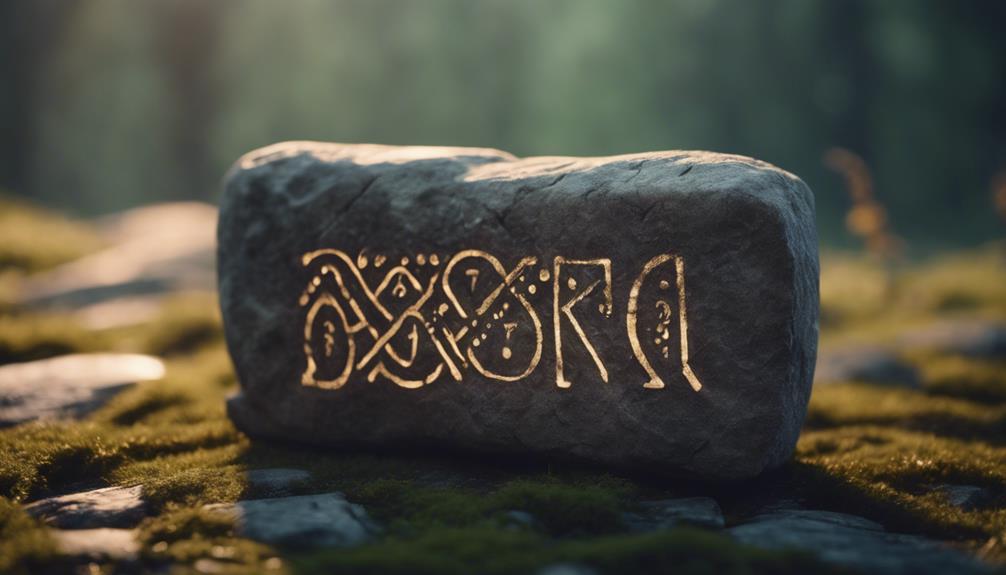The Eye of Providence is a symbol of divine oversight, symbolizing that higher powers watch over nations and their destinies. You’ll find it on the Great Seal of the United States and various banknotes, including the dollar bill, reminding you that moral guidance and divine protection are always nearby. Its origins trace back to ancient Egypt and Christian iconography. Exploring more reveals how this symbol continues to influence our understanding of authority and morality.
Key Takeaways
- The Eye of Providence symbolizes divine oversight and guidance, historically linked to ancient Egypt and Christian iconography.
- It appears atop the pyramid on the US Great Seal, representing divine watchfulness over the nation’s destiny.
- The symbol is featured on currency, notably the US dollar, implying divine care for economic prosperity.
- Its presence on national emblems and banknotes reflects the belief in divine influence over governance and morality.
- Today, the Eye serves as a reminder of moral principles and ongoing divine oversight in national affairs.

Have you ever noticed the eye symbol atop the pyramid on the Great Seal of the United States? That symbol is known as the Eye of Providence, and it carries deep roots in divine symbolism and historical origins. When you see it, you’re looking at more than just a decorative element; you’re witnessing a symbol that has been used for centuries to represent divine watchfulness and guidance. Its origins trace back to ancient civilizations, where the eye was a powerful emblem of divine insight and protection. The ancient Egyptians, for example, depicted the Eye of Horus as a symbol of protection, health, and royal power. Over time, this imagery evolved and was adopted into Christian iconography, where the eye came to symbolize God’s omniscience and omnipresence. The Eye of Providence, in particular, gained prominence during the Renaissance, when artists and thinkers sought to visualize divine oversight in human affairs. During this period, it became a common motif in religious art, representing God’s watchful eye over humanity.
As you look at the Great Seal of the United States, the eye atop the pyramid symbolizes this divine oversight, suggesting that a higher power is guiding the nation’s destiny. This imagery isn’t accidental; it reflects the Founding Fathers’ desire to acknowledge divine Providence as a guiding force in the formation of the country. The symbolism emphasizes that the nation’s progress and stability depend on divine protection and wisdom. Historically, the eye was meant to serve as a reminder that human endeavors are under divine scrutiny, reinforcing the idea that moral integrity and faith are essential to national success. Additionally, the placement of the Eye of Providence on currency underscores its ongoing role as a symbol of divine authority, reminding citizens of the moral principles underpinning the nation’s foundation.
Today, you’ll see the Eye of Providence on various banknotes, most notably on the US dollar bill. Its presence on currency continues to evoke that sense of divine watchfulness, implying that the nation’s prosperity is under divine care. This use ties directly back to its historical origins, where the symbol conveyed divine authority and guidance. The eye’s placement on money isn’t just decorative; it’s a reminder of the moral and spiritual principles that underpin the nation’s foundation. Whether you interpret it as a divine symbol or a historical emblem, the Eye of Providence remains a powerful reminder that many believe divine forces are watching over nations and individuals alike, shaping their destinies in unseen ways.
Frequently Asked Questions
What Symbols Are Commonly Associated With the Eye of Providence?
When you think about symbols associated with the eye of providence, you often see masonic symbols and imagery representing divine insight. The eye itself symbolizes watchfulness and spiritual awareness, often depicted within a triangle or radiating light, emphasizing enlightenment. These symbols remind you of higher knowledge and divine guidance, aligning with the idea that there’s a divine force overseeing human affairs, inspiring wisdom and protection through the imagery of this all-seeing eye.
How Did the Eye of Providence Originate Historically?
You might think the eye’s been watching forever, but its roots trace back to ancient origins. It emerged from religious symbolism, especially in Egyptian and Christian traditions, representing divine insight and protection. Over time, the eye symbol gained prominence, symbolizing watchfulness and spiritual awareness. Its journey from sacred art to modern iconography shows how powerful symbols evolve, keeping their meaning alive across centuries.
Which Famous Artworks Feature the Eye of Providence?
You’ll find the eye of providence in famous artworks like Leonardo da Vinci’s “The Last Supper,” where it symbolizes divine watchfulness. Artists use this symbol in various cultural contexts, creating artistic interpretations that emphasize spiritual oversight or enlightenment. Its presence in religious paintings and allegories enhances the symbolic meaning, reminding viewers of divine guidance. This cultural symbolism continues to inspire modern art, blending historical significance with contemporary creative expressions.
Is the Eye of Providence Linked to Any Conspiracy Theories?
You might wonder if the eye of providence is linked to conspiracy theories. It’s often associated with secret societies like the Illuminati, fueling speculations about hidden control and manipulation. Many believe these symbols represent a secret agenda behind world events. While there’s no solid proof, these Illuminati theories persist, making the eye a popular icon in discussions about covert influence and conspiracy, despite its historical and artistic significance.
How Has the Symbolism of the Eye Evolved Over Time?
You might wonder how the symbolism of the eye has evolved over time. Its symbolic evolution reflects changing cultural significance, from ancient Egypt’s Eye of Horus representing protection to its modern use in the Eye of Providence symbolizing divine watchfulness. Over centuries, the eye’s imagery has shifted, gaining new meanings across different cultures and contexts, yet its core idea of insight and awareness remains powerful.
Conclusion
As you look at the Eye of Providence, remember it’s like a silent guardian watching over us all, quietly woven into the fabric of history and currency. Its gaze is a lighthouse amid the fog, guiding nations and secrets alike. Though unseen, its watchful eye reminds you that power, knowledge, and faith are forever intertwined, shaping the world beneath its eternal gaze. Ultimately, this symbol stands as a beacon of divine oversight, silent yet ever-present.










